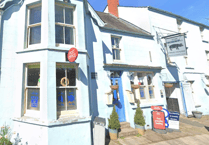A nearly full house gathered at Linton Village Hall on October 4th to delve into the post-Roman history of the Ross area, guided by Professor Keith Ray. Organised by the Linton & District History Society, the evening offered keen insights into a period scantily documented but rich in local legacy. Jonquil Dodd, Secretary of the society, was among those keenly listening to Keith's expertise.
Keith Ray, a renowned archaeologist, skillfully navigated the audience through the era following the Roman departure. He touched on how Romanised British leaders established themselves as Kings in major centres like Gloucester and Cirencester. One intriguing focus was the influence of St. Dyfrig, traceable through the many churches dedicated to him in present-day south and west Herefordshire.
These churches also serve as markers for the ancient British (Welsh-speaking) kingdom of Ergyng, which at its zenith covered not just the Ross area but extended to the River Severn and included what is now the Forest of Dean. The audience learned how this kingdom was eventually retracted as the Anglo-Saxons expanded, leaving priests in the Ross area to serve as interpreters and envoys to the Welsh-speaking communities after the Normans arrived.
The society's members were left eagerly anticipating the next meeting, scheduled for November 1st, where the builder of Chatsworth will be discussed. The society also plans to explore members' personal archaeological finds with archaeologist Philippa Heath at a future date.





Comments
This article has no comments yet. Be the first to leave a comment.